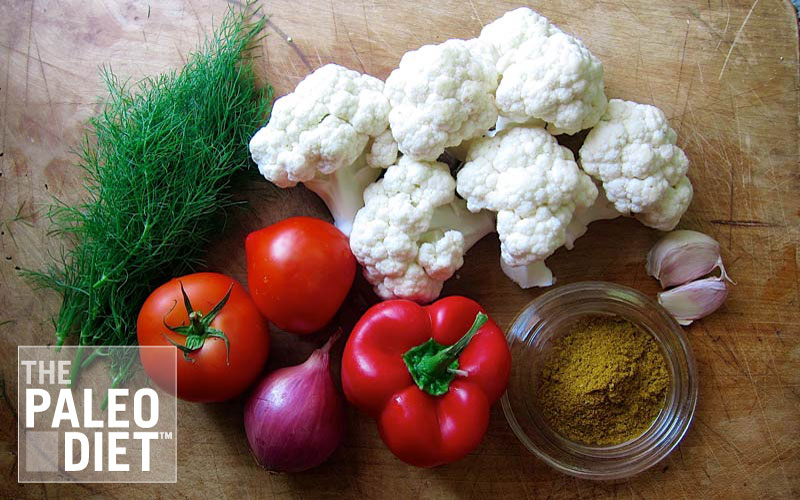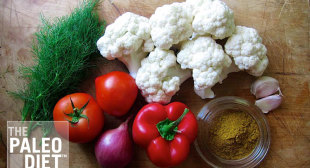Dill Curry Roasted Cauliflower

Roasting is an easy, quick, delicious approach to preparing vegetables.
You might think cauliflower roasted in the oven becomes dry, but dry heat from the oven removes moisture from the vegetables, thereby concentrating their flavors.
Cauliflower is about 92% water, so after roasting, it’s moist and tender.1
Like broccoli, cabbage, kale, and radishes, cauliflower belongs to the brassica family of vegetables.
Brassica vegetables, also known as cruciferous vegetables, are exceptionally nutritious and should be featured prominently in our diets.
Brassica vegetables are rich in vitamin A, vitamin C, folate, and fiber.
They are also high in glucosinolates, unique sulfur-containing compounds, which give them their distinctive bitter tastes and pungent aromas.2
Moreover, glucosinolates exhibit powerful healing properties, breaking down into indoles and isothiocyanates, which have been shown to inhibit the growth of cancer cells.3
Isothiocyanates also protect against pre-cancerous cells, helping the body eliminate them before they can damage DNA.4
Unfortunately, one of the most common ways of cooking cauliflower is boiling.
Glucosinolates are water soluble, meaning they can leach into the cooking water.
A 2007 study confirmed that boiling brassica vegetables results in significant glucosinolate losses, whereas steaming or stir-frying results only in minor losses.5
For the boiled vegetables, 90% of the lost glucosinolates were detected in the cooking water.
With brassica vegetables, you should also avoid cutting them long before consuming them.
In the same study, glucosinolate losses of 75% were observed just six hours after shredding them.
In our recipe, cauliflower combines beautifully with fresh dill and Indian curry spices.
Curry powders vary widely in terms of quality and composition, so be sure to read the product labels avoiding those with added salt. Enjoy!

Ingredients
Method
- Make nice looking florets, cut the cauliflower stems then use your fingers to break them into pieces.
- Break the cauliflower into bite-size pieces.
- Put the cauliflower, onion, garlic, bell pepper, tomato, curry powder, black pepper, and coconut oil into a mixing bowl.
- Mix all the ingredients well and transfer to a baking sheet.
- Bake at 350°F for about 20 minutes or until the vegetables are tender and lightly browned.
- Remove from the oven, drizzle with olive oil, and toss with the fresh dill.
References
1. Nutrition Data. Retrieved July 8, 2014 from http://nutritiondata.self.com
2. Johnson, I.T. (January 2002). Glucosinolates: bioavailability and importance to health. International Journal for Vitamin and Nutrition Research, 72(1). Retrieved from http://www.ncbi.nlm.nih.gov/pubmed/11887749
3. Hayes, J.D., Kelleher, M.O. & Eggleston, I.M. (May 2008). The cancer chemopreventive actions of phytochemicals derived from glucosinolates. European Journal of Nutrition, 47(Supplement 2). Retrieved from http://www.ncbi.nlm.nih.gov/pubmed/18458837
4. Zhang, Y. (November 2004). Cancer-preventive isothiocyanates: measurement of human exposure and mechanism of action. Mutation Research, 555(1-2). Retrieved from http://www.ncbi.nlm.nih.gov/pubmed/15476859
5. Song, L. and Thornalley, P.J. (February 2007). Effect of storage, processing and cooking on glucosinolate content of Brassica vegetables. Food and Chemical Toxicology, 45(2). Retrieved from http://www.ncbi.nlm.nih.gov/pubmed/17011103